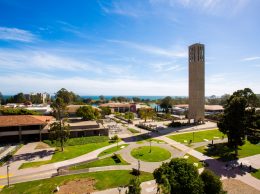Editorial: Higher education caught in governor’s game with voters
In his proposed 2012-13 budget, Gov. Jerry Brown is playing a high-stakes game when it comes to higher education.
His newest plan continues a 27 percent reduction in funding for the California State University system as well as a continuation of dramatic cuts for community colleges. The University of California system gets some one-time adjustments, but it too faces another year of dramatically reduced state funding. The proposed funding for CSU alone, while it remains at $2 billion systemwide, is far below levels that are required to meet its commitments to freshman and transferring community college students.
For the Tri-Counties, the stakes are extremely high. All budget cuts curb the ability of Cal Poly San Luis Obispo to attract the faculty and staff that make it a world-class institution. Even worse, the state is not holding up its end of the bargain when it vowed that CSU Channel Islands would become a major force in higher education in Ventura County and beyond — if the private sector did its share. Thanks to the noble efforts of President Richard Rush, Channel Islands has attracted millions of dollars in private funding, but it is the public side that’s fallen behind.
What the governor is doing is counting on the electorate being so angry about the cuts that it’s willing to pass a series of tax measures in November that would raise income taxes yet again and increase state sales tax rates.
If all goes as planned, the measure will generate $7 billion a year in revenue that would restore some of the cuts — from the UC system all the way down to K-12. If voters do not approve the measure, more cuts are in store, including $200 million more for CSU, an amount equal to funding for 27,000 students.
“Our campuses have done everything they can to get through this fiscal year with a $750 million budget cut,” CSU Chancellor Charles B. Reed said in a statement. He added that with any more cuts, “we will need to take more drastic measures” including enrollment cuts.
While the governor plays his game of budget chicken with voters, time is not on California’s side. Demands for a skilled workforce keep rising with much of the competition coming from Asia, where the Golden State once was poised to dominate in trade and manufacturing. According to the Public Policy Institute of California, it will take one million more college graduates by 2025 to keep the state competitive.











